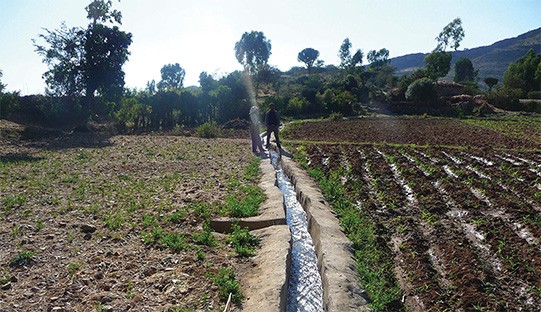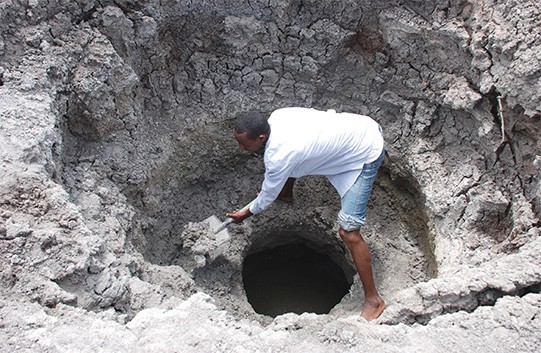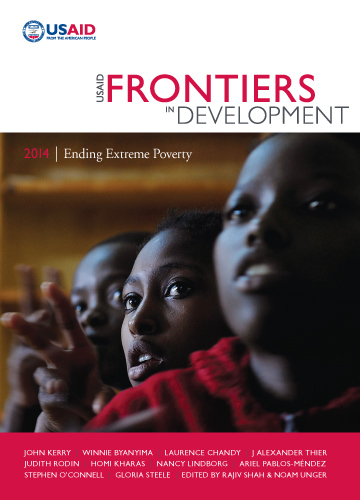Judith Rodin
When Cyclone Phailin hit India’s east coast last fall, early warning and evacuation systems saved countless lives. Fewer than 30 people died in the initial storm, compared with a storm of similar impact and location 15 years ago which killed 10,000. Although the loss of human life was minimized, the impact on livelihoods was severe. The cyclone destroyed fishers’ boats, decimated crops and damaged homes. While rebuilding and recovery is under way, the reality is that another typhoon season is just around the corner. Another storm of similar size could knock communities back to square one.
For poor and vulnerable people, increases in the frequency and intensity of events like Phailin loom large. The uncertainty of where or when another disaster might strike makes it difficult to plan or save for the future. But we do know that, with every passing year, more people are threatened by the possibility of life-changing disaster. By 2030, up to 325 million extremely poor people will be living in the world’s most hazard-prone countries, the majority in South Asia and sub-Saharan Africa.
The increasing frequency and impact of these shocks and stresses hinder more than individual sense of security; they stymie development progress in many parts of the world. An estimated one out of every three dollars spent on development is later forfeited to the destruction of natural disasters. Meanwhile, year after year, humanitarian aid continues to pour into the same regions to address immediate recovery needs.
We need a new approach—one that more effectively captures synergies across the provision of humanitarian and development assistance and optimizes investments that forestall the underlying vulnerabilities that turn man-made and weather-related shocks into disasters.
At The Rockefeller Foundation, we believe that approach is building resilience, defined as the capacity of individuals, communities, organizations and systems to survive, adapt and grow in the face of shocks and stresses—and even to transform, when conditions require it.

More than disaster response, resilience focuses on investments that can be made before disruption strikes. And unlike risk mitigation, which focuses only on vulnerabilities, resilience takes into account capabilities and strengths—for example the unique services provided by local ecosystems or the strong cultural cohesion among societies—resources that can be leveraged not only in times of disaster, but every day.
These are elements of what we call the resilience dividend, which has two parts. First, resilience minimizes the amount by which households, or any other scale we might look at, experience a drop in their economic and health security as the result of a shock. It maximizes the speed at which a sustained recovery can begin.
The second part of the resilience dividend can be broadly defined as the co-benefits of investing in resilience—that is, stronger social services, more diversified economic opportunities, more tourism or new (and more) jobs. In the context of development, resilience investments can contribute to increased economic and social progress in vulnerable parts of the world, maximizing the expenditures of foreign governments or development banks.
The Rockefeller Foundation has organized our resilience work around helping communities, cities and entire industries achieve this resilience dividend. We’ve been doing this work for nearly a decade, first in post-Katrina New Orleans, then in dozens of Asian cities to help them build resilience strategies to address climate change. Last year, we launched our biggest effort yet, the 100 Resilient Cities Challenge. This $100-million effort focuses on building resilience in 100 cities worldwide and creating a platform of goods and services that carry the additional capacity to leverage public-finance and private sector resources.
Across all of our work, we have learned a number of principles that guide successful resilience-building, from the importance of empowering local actors to identify problems and develop tailored and evidence-based solutions to the power of cross-regional collaboration and the critical role of innovation in incubating novel solutions and scaling high-potential ideas.
Another component that underpins resilience is the principle of inclusion—ensuring that people are consulted on and become collaborators in decisions that affect their lives and facilitating access to the physical, financial and social resources that will help them through times of shock and stress.
With these learnings top of mind, and in consultation with humanitarian and development actors building resilience around the world, we’ve identified four gaps we must address to better integrate resilience into future work.
The first is building capacities for forecasting and managing risk. Today, a limited ability to predict and quantify risk leads to consistent and widespread under-investment in activities for building resilience. Through inputting rapid, responsive and representative data into a combination of predictive analytical models, we could more easily diagnose regional problems and gain an earlier line of sight regarding where assets and investments are most required.
Second, good measures of resilience are essential for diagnosing problems, deploying resources and designing appropriate resilience-building strategies. Further improving the evidence base and understanding around what works and attracts investments for resilience is imperative.
Third, financing vehicles are needed that increase the flexibility and responsiveness of current funding flows and provide resources for currently under-funded—but potentially high impact—solutions. Resilience Impact Bonds—bonds issued by a government backed by a donor—could be one example. These bonds could finance a range of projects—from strengthening natural ecosystems (through activities such as mangrove planting) to large-scale coastal protection and small-scale infrastructure, such as sea walls or storm-resistant housing, which would protect key assets.
Fourth, technological solutions are needed to accelerate resilience-building. Predictive modeling, for example, can generate compelling evidence and catalyze financing toward resilience dividends. The Rockefeller Foundation saw this happen in 2008 when we funded Stanford University researchers to develop climate and crop models at the country level for sub-Saharan Africa. These models helped inform our support of Oxfam’s launch of the HARITA/R4 partnership, which led to the development of a crop insurance program in Ethiopia that protects poor farmers in times of drought in exchange for their labor on community projects, such as irrigation ponds, that build resilience against future dry seasons.
To date, this effort has grown from a pilot of 200 farmers to a program serving over 20,000 farmers in Ethiopia. Oxfam enlisted a host of collaborators to fuel the partnership, including Swiss Re, the International Research Institute for Climate and Society (IRI), the Relief Society of Tigray, Dedebit Credit and Savings Institution, Nyala Insurance Company and Africa Insurance Company. The initiative is being replicated in Senegal, beginning with 500 households.

This is just one example of success—but we need many more. To this end, The Rockefeller Foundation and USAID have launched the Global Resilience Partnership, a $100-million effort. This partnership builds upon our combined successes in applying resilience concepts in development and humanitarian sectors to leverage hundreds of millions—possibly billions—of dollars toward innovative and scalable resilience solutions in the Horn of Africa, the Sahel and South and Southeast Asia, all dramatically impacted regions.
Although this partnership is in its early stages, we’re already seeing great enthusiasm and engagement. The goal is not to compete with the host of actors already doing successful work but rather foster their ingenuity and investment and help them amplify their efforts by offering expertise, solutions tailored to their challenges and added capacity to realize their ideas. Ultimately, the Global Resilience Partnership aims to help vulnerable communities and organizations better anticipate, prepare for and recover from shocks and stresses of increasing frequency and intensity and to protect the lives and livelihoods of hundreds of millions of people.
We hope this effort will contribute to the alleviation of extreme poverty in these regions. When families and households are able to save more money, protect their assets and make plans for the future, they will have a better chance of rising from their economic circumstances, rather than getting knocked back down again and again. That’s the potential of the resilience dividend for meeting our development goals. We believe it’s an investment worth making.
Judith Rodin is president of The Rockefeller Foundation. The views expressed in this essay are her own and do not necessarily represent the views of the United States Agency for International Development or the United States Government.
Frontiers in Development
Section 4: Going Forward (Without Going Backward)








Comment
Make a general inquiry or suggest an improvement.